This tiny house’s plumbing supplies a kitchen sink, bathroom sink, and shower heated by a tankless propane heater. A composting toilet makes all drainage possible through a greywater system so no sewage hookup is required.
Plumbing + Hot water heater installation.
Water supply
Water is supplied to the tiny house by a garden hose. A potable water hose should be used.
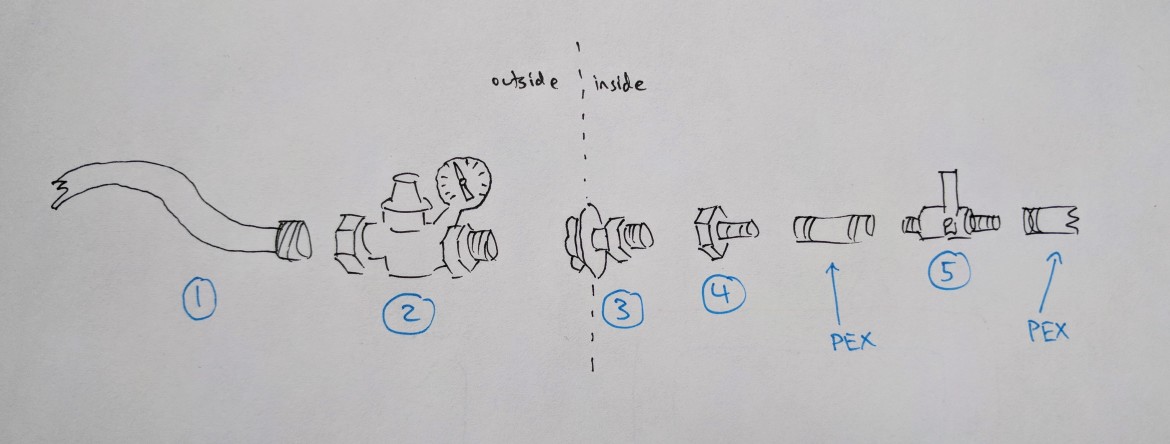 Water intake diagram
Water intake diagram
Water intake:
- Hose: Water comes in through a potable hose.
- Pressure regulator: Holds the water pressure inside the house to around 45 PSI.
- Water inlet: This is where the hose or pressure regulator can attach to the tiny house.
- FPT to PEX barb adapter: Adapter between the NPT (male) threads of the inlet to the 1/2” PEX system used inside the house.
- Shutoff valve: Allows complete water intake shutoff from inside the house.
The water is distributed through the house like so:
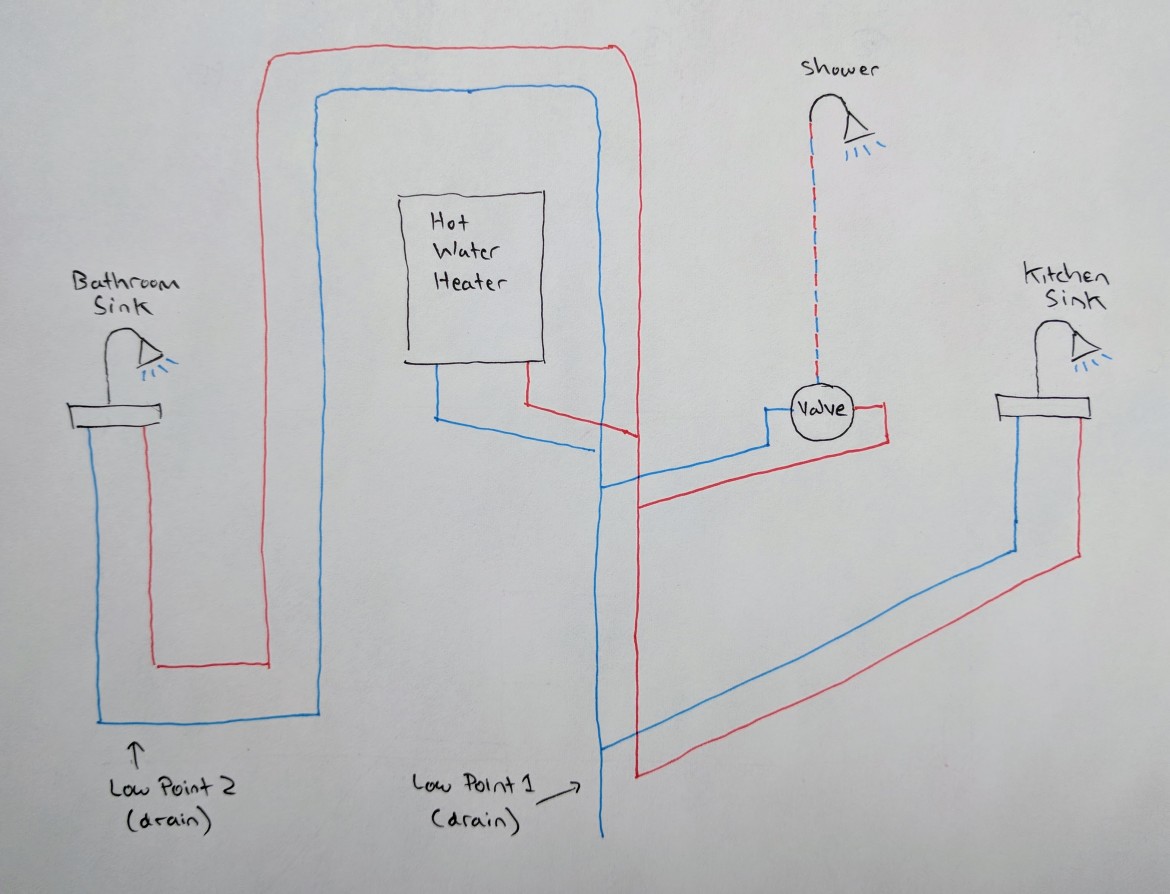 Water distribution diagram
Water distribution diagram
Plumbing in SIPs
Plumbing should not be run through exterior walls of a SIP building. Unfortunately, all the walls of this tiny house are exterior walls. Fortunately, my plumbing needs are pretty minimal so I was able to get away with hiding all my plumbing in the bathroom wall and under the kitchen cabinet, except for one exposed run from the bathroom to the kitchen. In this section I protected the PEX inside PVC pipes.
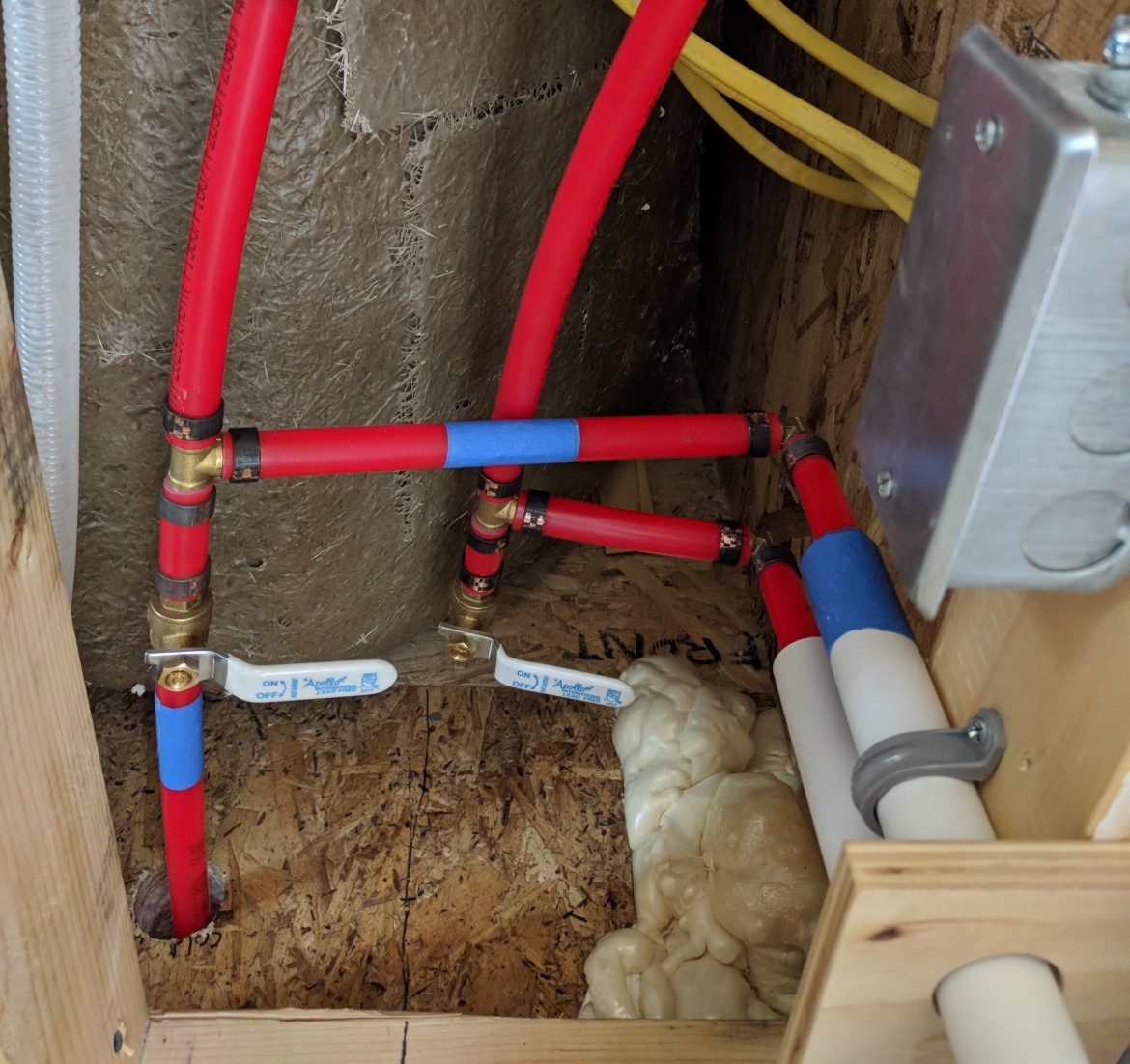
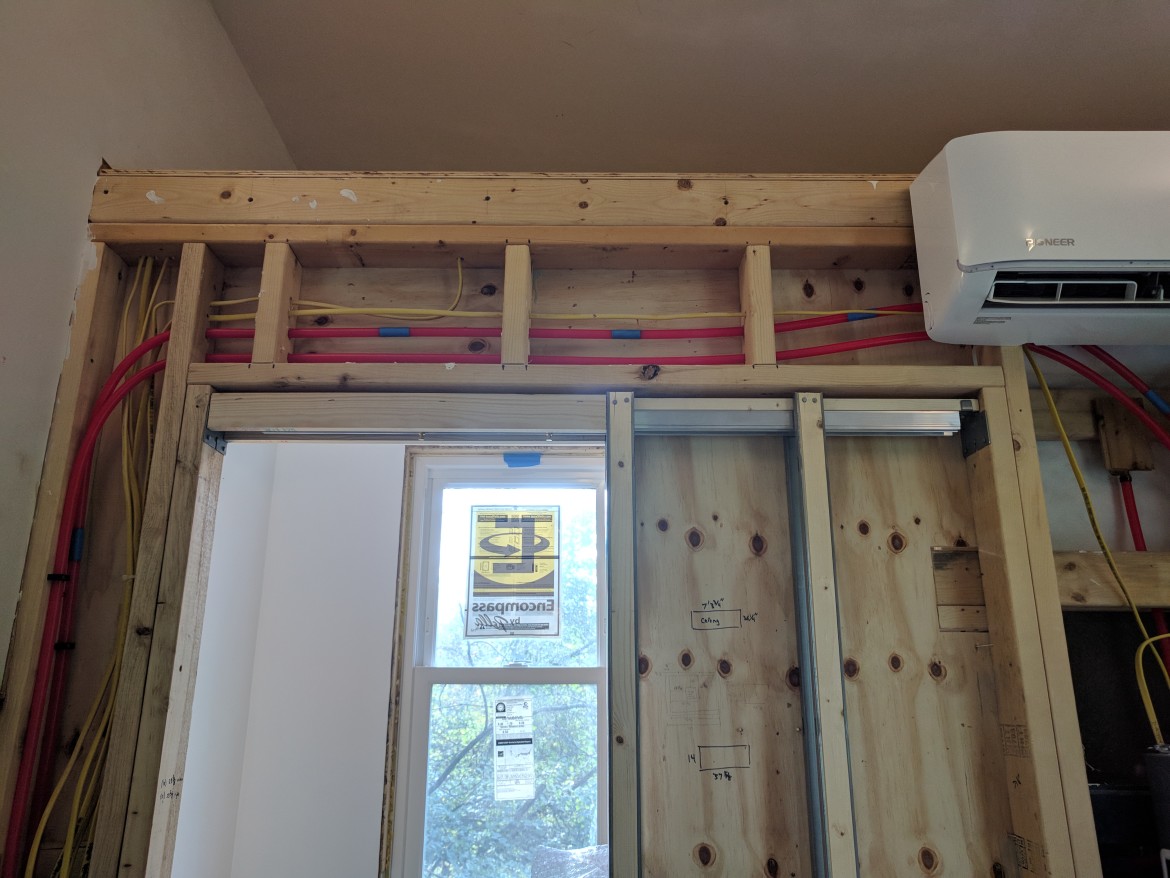
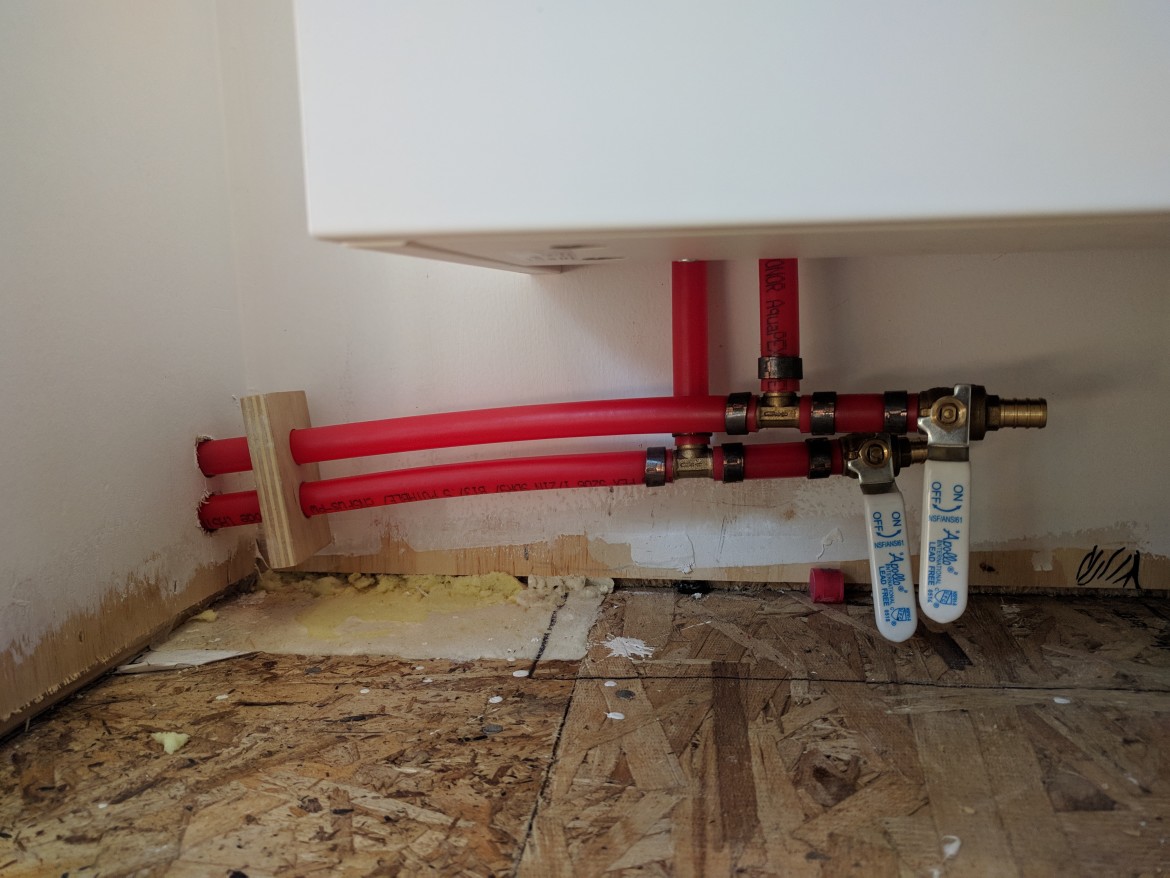
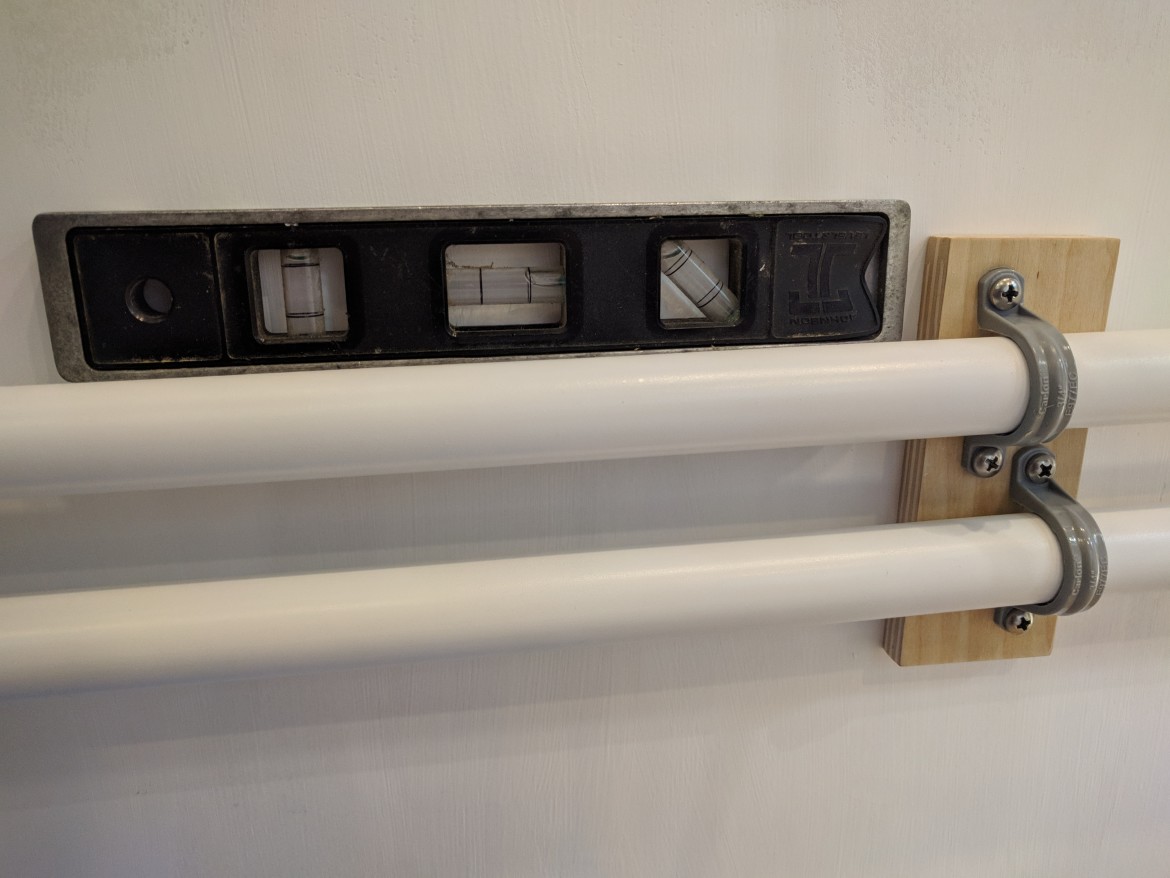
Greywater drainage
Because this tiny house will use a composting toilet, it will only produce greywater (i.e. no poo in the water), so it does not need a connection to a sewage system.
P-traps
P-traps form a water seal to prevent sewage gases from venting up through drains into a house. Because this tiny house is not connected to a sewage system, there are no sewage gases to worry about so P-traps are not so necessary. However, I did install P-traps under both sinks to follow plumbing conventions and in case this house is ever attached to a sewage system they would need no modification. I did not install a P-trap under the shower because it would need to be external and could freeze. If this house is ever connected to sewage (or if the greywater system has some odor) an external P-trap must be installed (might need powered heat tape to ensure it doesn’t freeze in the winter).
Hot water: propane tankless heater
I’m using the eccotemp i-12 tankless propane heater to heat the water in this tiny house. I discuss my reasons for choosing a propane system over an electric one here.
 Propane intake diagram
Propane intake diagram
Dealing with freezing
Normal usage during freezing weather
The water intake hose must be prevented from freezing. This can be done with a heated hose, or by burying the supply hose below the frost line and using a frost-proof yard hydrant.
The propane tank temperature should also be prevented from getting too cold with a powered blanket because at low temperatures propane efficiency drops significantly.
Leaving the house unused in winter
If the house is left unoccupied during freezing weather, the inside temperature will drop below freezing, so some precautions need to be taken:
- Drain the water heater: If water freezes inside it, it will die forever.
- Drain the pipes: PEX is more flexible than rigid plumbing pipes so you could maybe get away with letting them freeze with water inside, but they could still rupture.
The piping system is designed so that there are 2 lowest points in the entire system, both of which have drain valves. One is under the bathroom sink, and the other is in the utility wall behind an access panel.